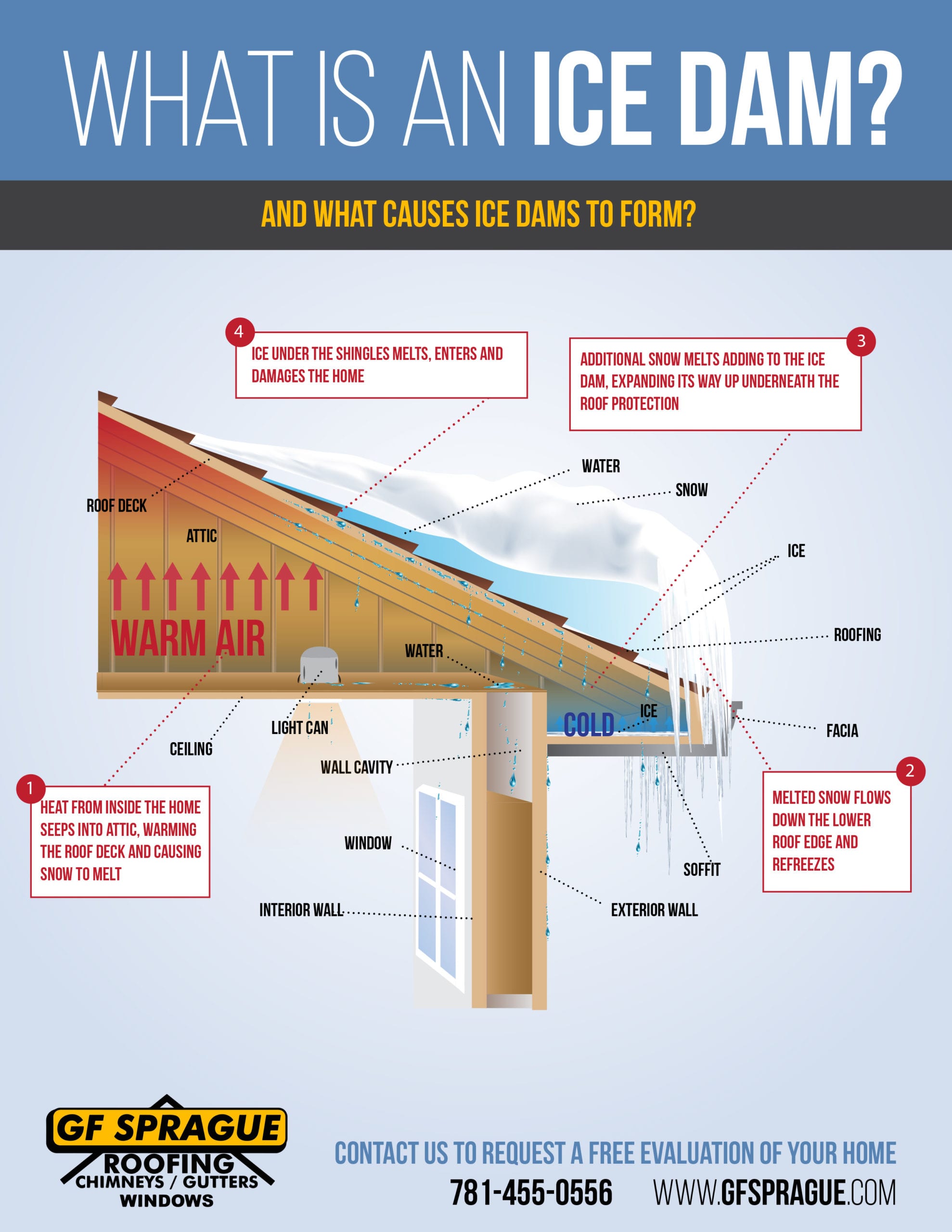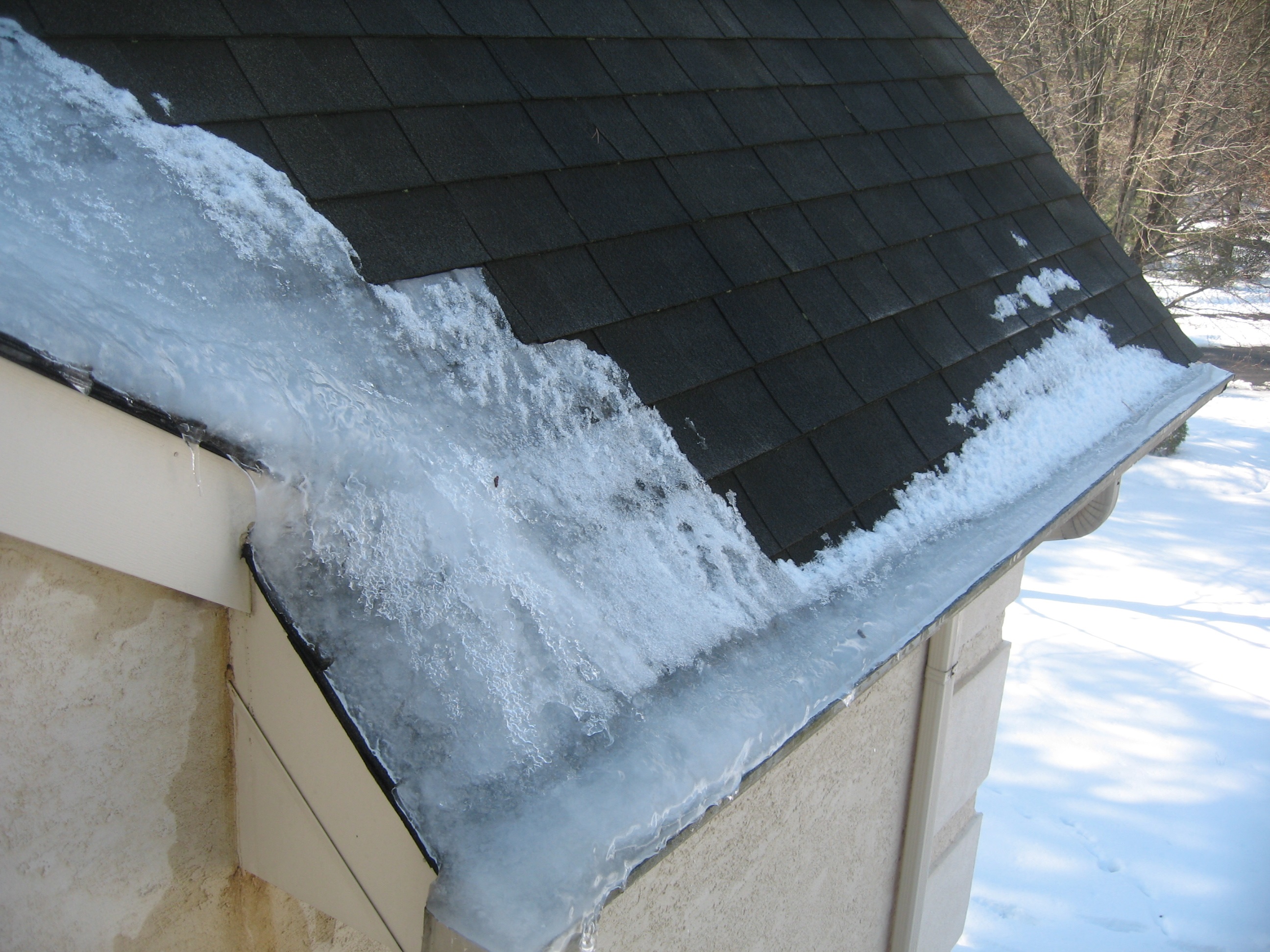Ice Dam Removal Guide: Near Me & Prevention Tips!
Are you staring at a looming wall of ice on your roof, wondering if its about to turn into a waterfall inside your living room? Ignoring ice dams can lead to devastating and expensive damage to your home, so prompt action is paramount.
Ice dams, those menacing ridges of ice that form at the edge of roofs, are a common winter woe, particularly in regions prone to heavy snowfall and fluctuating temperatures. They aren't merely an aesthetic blight; they are a significant threat to the structural integrity of your home. The process begins when heat escapes from the house, warming the roof and melting the snow. This meltwater trickles down the roof until it reaches the colder eaves, where it refreezes, creating an ice dam. As more snow melts and refreezes, the dam grows, trapping water behind it. This trapped water can then seep under shingles, leading to leaks, damaged insulation, and even structural damage to walls and ceilings. Understanding the dynamics of ice dam formation is the first step toward effective prevention and mitigation.
| Ice Dam Information | |
|---|---|
| Formation | Occurs when melting snow refreezes at the edge of the roof, creating a dam that traps water. |
| Dangers | Can cause leaks, damage to insulation, structural damage to walls and ceilings, and mold growth. |
| Average Removal Cost | Around $1,200, with prices ranging from $400 to $4,000 depending on factors like dam size and roof complexity. |
| Prevention Technique #1 | Remove snow from your roof to prevent melting and refreezing. |
| DIY Removal Method | Carefully chip away at the ice, avoiding damage to the roof. Steam is preferred over salt or mechanical tools. |
| Professional Services | Offer safe and efficient ice removal using specialized equipment like steamers, preventing damage to shingles. |
| Long-Term Solution | Interlock metal roofing provides efficient heat conduction, a smooth surface, and potential for proper ventilation and insulation to prevent ice dam formation. |
| Reference: U.S. Environmental Protection Agency (EPA) |
One of the most proactive steps you can take is physically removing snow from your roof. The principle is simple: if there's no snow to melt, there's no water to refreeze and form an ice dam. A roof rake, designed specifically for this purpose, is your best tool. It allows you to remove snow from the ground, reducing the risk of falling. Start from the eaves and work your way up, pulling the snow down in manageable amounts. Be mindful of overhead power lines and avoid contact. Moreover, be cautious of the falling snow itself, as it can be heavy and create a hazard for anyone below. Remember, safety is paramount, and if you're uncomfortable with heights or the task seems too daunting, it's best to call in professionals.
- Steamy Movies Sexy Videos Trending Now Dont Miss Out
- Pete Hegseth Military Service Fox News What Hes Known For
While the temptation to quickly dissolve ice dams with readily available materials might be strong, think twice before reaching for rock salt. Rock salt, while effective at melting ice, can wreak havoc on your roofing materials, gutters, and even the surrounding landscaping. The corrosive nature of salt can degrade shingles, leading to premature wear and tear. It can also corrode metal gutters, causing them to rust and weaken. Furthermore, runoff containing salt can harm plants and contaminate soil. Safer alternatives include calcium chloride-based ice melt products, which are less harmful to the environment and your property. However, even these should be used sparingly and with caution. The best approach remains physical removal whenever possible.
If you're dealing with small to moderate ice dams and feel confident in your abilities, carefully chipping away the ice might offer a solution. However, this method demands extreme caution. Using excessive force or the wrong tools can easily damage your roof. Avoid using sharp tools like axes or ice picks, as these can puncture shingles and create leaks. A blunt instrument, such as a rubber mallet, combined with gentle taps, is a safer approach. Work slowly and methodically, focusing on creating channels for water to drain. Remember, the goal is to alleviate the dam, not to demolish it. If you encounter stubborn ice or feel unsure about proceeding, it's always wise to consult a professional.
Elite ice dam prevention extends beyond mere removal; it emphasizes a holistic approach to safeguarding your home. These specialized services often involve a thorough assessment of your roof's ventilation and insulation. Inadequate ventilation allows heat to build up in the attic, contributing to snowmelt and ice dam formation. Similarly, poor insulation allows heat to escape through the roof, exacerbating the problem. Professionals can identify these weaknesses and recommend solutions such as installing additional vents or improving insulation levels. Furthermore, they can apply preventative measures like ice and water shields, which provide an extra layer of protection against leaks.
- Elon Musks Height Unveiling The Truth Behind His Stature
- Hyungry Temporary Replacement 2 What Fans Are Saying More
Professional ice dam removal services offer a safe and efficient way to eliminate ice dams without risking damage to your roof. These services employ specialized equipment, most notably steam, to gently melt the ice. Steam is a highly effective tool because it can precisely target the ice without causing harm to the underlying shingles. Unlike mechanical methods, which can be abrasive, steam melts the ice gradually, preserving the integrity of the roofing materials. Moreover, professionals are trained to identify potential problem areas and take precautions to prevent further damage. By entrusting the task to experts, you can ensure that the ice dams are removed effectively and safely.
The cost of ice dam removal can vary significantly depending on several factors. The size of the ice dam, the complexity of the roof, and the location of your home all play a role in determining the final price. Simple ice dam removal on a small, easily accessible roof might cost as little as $400. However, for larger, more complex roofs with extensive ice dams, the cost can escalate to $4,000 or more. It's essential to obtain multiple estimates from reputable companies and to inquire about their experience, insurance coverage, and methods of removal. Be wary of companies that offer suspiciously low prices, as they may cut corners or lack the necessary expertise.
Understanding the factors that influence ice dam removal costs empowers you to make informed decisions and avoid overpaying. First, the size of the ice dam is a primary driver of cost. Larger dams require more time and effort to remove, translating into higher labor charges. Second, the complexity of the roof affects the accessibility and the time required to complete the job. Steeply pitched roofs, multiple levels, and obstacles like chimneys can all increase the cost. Third, the location of your home can also influence pricing. Companies in areas with high demand for ice dam removal services may charge more. Finally, the method of removal can impact the cost. Steam removal, while safer, may be more expensive than mechanical methods.
Investing in interlock metal roofing offers a lasting solution to ice dam prevention. Metal roofs possess several characteristics that make them resistant to ice dam formation. Their efficient heat conduction allows for uniform heating across the roof surface, minimizing temperature variations that lead to snowmelt and refreezing. Their smooth surface prevents snow from accumulating easily, reducing the amount of meltwater that can contribute to ice dam formation. Furthermore, metal roofs can be designed with proper ventilation and insulation, further minimizing heat loss and preventing ice dams from forming in the first place. While the initial investment in metal roofing may be higher than traditional roofing materials, the long-term benefits, including ice dam prevention and increased durability, can outweigh the costs.
Interlock metal roofing provides a multi-faceted approach to combating ice dams. The efficient heat conduction of metal helps to maintain a consistent temperature across the roof, preventing localized melting and refreezing. The smooth surface of metal allows snow to slide off easily, reducing the potential for snow accumulation and subsequent meltwater. Proper ventilation and insulation, when integrated with a metal roofing system, further minimize heat loss from the attic, preventing snow from melting in the first place. By addressing the root causes of ice dam formation, interlock metal roofing offers a comprehensive and long-lasting solution.
When hiring professionals for ice dam removal or prevention, it's crucial to ensure they are properly licensed, bonded, and insured. Licensing demonstrates that the company has met certain standards of competence and adheres to industry regulations. Bonding provides financial protection in case the company fails to fulfill its contractual obligations. Insurance protects you from liability if a worker is injured on your property or if your property is damaged during the work. Verifying these credentials is an essential step in protecting your investment and ensuring a safe and successful outcome.
The frustration and worry caused by ice dams can feel overwhelming, but there is a clear path to resolution. A simple phone call to a qualified professional can initiate the process of eliminating existing ice dams and implementing preventative measures. Don't let leaks and potential damage linger; taking prompt action is the key to protecting your home and restoring peace of mind.
- Steamy Movie Collection Hottest Picks Where To Watch Now
- Unveiling Prominent Platforms Hot Content Trends Must See

Ice Dam Removal Near Me A Comprehensive Guide To Preventing Winter Damage

Ice Dam Removal Clayton Hoover

Ice Dam Removal Near Me A Comprehensive Guide To Preventing Winter Damage